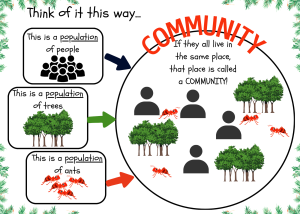Fact: There is never enough time for a teacher to get the things done that need to be done. [Time management is critical for success.]
It’s no secret that teaching can sometimes feel like a juggling act with a never-ending to-do list. This is why time management strategies are so crucial.
But fear not, because here are insights to help you crack the code to successful teaching without breaking a sweat (Okay, that may be a slight exaggeration).
You see, the educational system can often resemble a complex web of standards, regulations, and expectations. It all starts with the state standards (or, possibly, national ones), and then it trickles down through various layers – city, district, or county school systems. Even private schools have their unique set of standards too. Nonetheless, we’re in this together!
In this and future posts, we’ll explore ingenious strategies, time-saving tips, and clever hacks that will help you navigate the educational labyrinth comfortably. We’ll show you how to make the most out of your teaching journey, so you can focus on what truly matters: inspiring and educating the future leaders of tomorrow.
So grab your favorite coffee mug, kick back, and let’s jump into the world of teaching smarter, not harder with time management.
Time Management
Ask yourself a few questions concerning time and school:
How do you use your time?
What do you do with your time?
The Pareto principle
The Pareto Principle, also known as the 80/20 rule, maintains that approximately 80% of the consequences or outcomes are generated by just 20% of the contributing factors. In other words, it suggests that a small number of efforts often produce the majority of results or outcomes. This is a powerful reminder that the path to efficiency often involves identifying and nurturing a few key factors.
‘So’, you’re thinking, ‘I only have to teach 20% of the time?’ Umm, no. What I am saying is that most of your measurable efforts usually go into a smaller number of things you teach. And these efforts account for the majority of successes.
For example, think about your state standards. There are most likely a multitude of them. But, normally, only a few (say ~20%) key components are necessary for students to master the content.
Standards of Learning
In Virginia, we have the Standards of Learning (SOL’s). They span all grade levels and core subject areas. (Since this is a science teaching post, we’ll limit it to science. And, of that, further constrict it to middle school.)
In middle grades (6-8) in Virginia, students work through three different sciences: general science-6th, life science-7th, and physical science-8th. The main overlap between grade levels is scientific and engineering practices. Specific subject standards to those grade-level sciences have some commonality…though not a lot. Incidentally, middle school science students are tested on all standards (6-8) in 8th grade. Hence, teachers must find the key areas within their discipline to maximize success rates.
From looking at the standards for NGSS and TEKs, they use crosscutting concepts from one grade to the next and build upon prior learning across several key areas. This approach has many advantages, especially when it comes to standards testing.
Regardless, with the multitude of tasks, jobs, duties, and responsibilities you are surrounded with, you need to make work smarter, not harder.
[This post does not tackle teaching methods or classroom hacks. Look for that in a future post. No, this post is focused on the behind-the-scenes look at teacher time management when students aren’t present.]
Methods, Tips, & Tricks
To begin, it is necessary to set priorities in your work. In Steven Covey’s book “The 7 Habits of Highly Effective People”, he asserts that you must be proactive. You must recognize that you are the one controlling your actions and responses. You may not have control over what you have to do, but you do have control over yourself. (Try to get that across to middle schoolers!)
Central Office provides the framework (standards) for you. You and your coworkers determine (I hope) how to accomplish those tasks.
Here are a few methods that will help you make the most of your time (You probably already do one or more. Hats off if you do!):
1) 2-Minute Rule
So, what’s the 2-minute rule? It’s a little productivity hack that says: If you’ve got a task on your to-do list that you can finish in two minutes or less, do it right away! Don’t procrastinate or let it linger.
Whether it’s responding to a quick email, tidying up your desk, or making a brief phone call to a parent, taking care of these small tasks immediately can clear your plate and prevent that overwhelming pileup of duties.
Think of it like a mini victory dance for your daily productivity. So, next time you spot a 2-minute task, seize the moment and get it done!
2) Big things first
Cal Newport, in his book “Deep Work”, argues that focusing efforts on cognitively demanding tasks is the key to productivity and success. This would seem like the opposite to the 2-minute rule as he categorizes email, and social media… as shallow work.
Yet, used in conjunction with deep work, the 2-minute rule would be a way to remain productive while getting many tasks accomplished. For example, an intense dose of grading followed by a “break” where you check emails would make for a very productive use of your time.
3) Time Blocking
The first thing that comes to mind is the time I set aside during planning and after school to grade and plan. I have a rule that was engrained in my mind. It is “Never take work home.” Why? Well… it never got done.
So, during planning, hiding with my door locked became a common occurrence.
After school, most teachers left to go home. It was the perfect time to isolate myself in the room and tackle grading, copying, lab preparation, and other tasks.
It made for some late stays, but, I never worried about not being prepared the next day. Some of you may do the same thing in the morning before the kids arrive.
Task batching, also known as batch processing or time blocking, is a productivity technique where you group similar tasks or activities and complete them during dedicated blocks of time.
Instead of constantly switching between different types of tasks throughout the day, you focus on a specific category or theme of work during each batching session. This approach minimizes the cognitive load caused by frequent context-switching and enhances efficiency and focus.
For example, you might allocate a morning block for answering emails, followed by an afternoon block for creative work, grading, or recording grades. By organizing tasks in this manner, you can optimize your workflow, reduce distractions, and make better use of your time and mental resources.
4) Pomodoro Technique
This technique was developed by Francesco Cirillo, a university student in Italy, in the late 1980s. Cirillo used a kitchen timer shaped like a tomato (pomodoro in Italian), which gave the method its name.
It works like this:
- Get your to-do list
- Set your timer for 25 minutes focusing on a task until the timer rings
- At the end of the 25 minutes, mark off 1 pomodoro/tomato (or whatever you choose to symbolize the 25-minute time period) and record what you completed
- Enjoy a 5-minute break
- Go back to step 1 or 2
- After 4 Pomodoro’s take a 15-30 minute break
To tackle large tasks, break them into smaller parts if the task requires more than 4 Pomodoros.
Small tasks can be added together if they amount to less than 1 Pomodoro.
Once the timer is set, it must ring… no distractions. If there is an unavoidable break in the task, use it as the 5-minute break and start the task again afterward.
If a task is finished before the 25 minutes are up, use the remaining time for overlearning or improving a skill or knowledge set.
Today, the Pomodoro Technique remains a widely recognized and practiced method for improving productivity, time management, and focus. It has also inspired various time management apps and tools that help individuals implement the technique in their work and study routines.
video explaining the technique https://youtu.be/dnt2lTdcn8g
5) Other considerations
Here are other means of increasing your productivity at work, or, when doing classwork at home:
- Set Clear Goals: Define your daily, weekly, and long-term goals to give your work purpose and direction. Think: Lesson Plans (I know. You already do this.)
- Prioritize Tasks: Use techniques like the Eisenhower Matrix or ABCDE method to identify and tackle high-priority tasks first.
- Create a To-Do List: Write down your tasks in a to-do list or digital task manager to stay organized and focused. (Use that planner or calendar!)
- Eliminate Distractions: Minimize interruptions by silencing notifications, closing unnecessary tabs, and setting designated periods for checking emails or messages. This is a tough one.
- Delegate: Delegate tasks to colleagues or team members when possible to free up your time for higher-priority work. This is a hard one as others are unlikely to take on added responsibilities to their already bloated task schedule.
- Avoid Overcommitting: Be realistic about what you can accomplish in a given timeframe and avoid overloading your schedule.
- Set Deadlines: Establish self-imposed deadlines for tasks to create a sense of urgency and accountability.
- Use Time Management Tools: Utilize productivity apps and tools like calendars, task managers, and project management software. (see links above)
- Regularly Review and Reflect: Assess your progress, adjust your schedule if needed, and identify areas for improvement in your time management strategies.
- Learn to Say No: Politely decline additional tasks or commitments that don’t align with your priorities or schedule.
- Take Breaks: Include short breaks throughout the day to rest, refresh your mind, and prevent burnout, which can hinder overall time management.
Wrap Up
If you’re a teacher, you know that time is a precious commodity. You often feel like a plate spinner with an endless to-do list. But the good news is that there are techniques to help you tackle the challenges of teaching without breaking too much of a sweat. But, the key to solving this problem is time management.
When it comes to time management, start by setting clear priorities and recognizing that you control your actions and responses. You may not control the tasks, but you can control how you approach them. Methods like the 2-Minute Rule can help you tackle quick tasks immediately, preventing them from piling up. Focusing on the most important tasks, known as the “big things,” can boost productivity. Time blocking allows you to allocate specific periods for tasks like grading or planning, and the Pomodoro Technique, with its 25-minute focused work sessions, can enhance your efficiency.
Ultimately, whether you’re breaking tasks into batches or using these time-tested methods, remember that working smarter, not harder, is the key to successful time management in the teaching profession.
Free Resource
To help you manage your time effectively on lab days, here is a free resource “4 Keys to Creating an Outstanding Lab Experience.“








